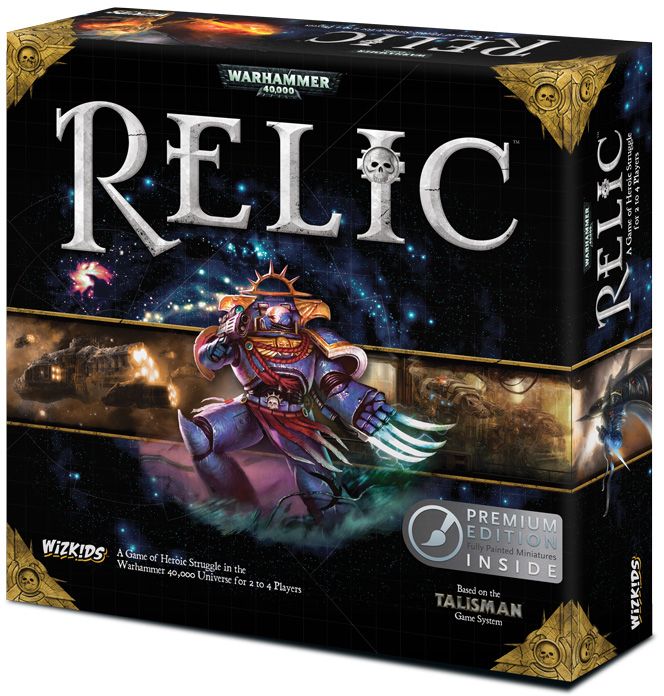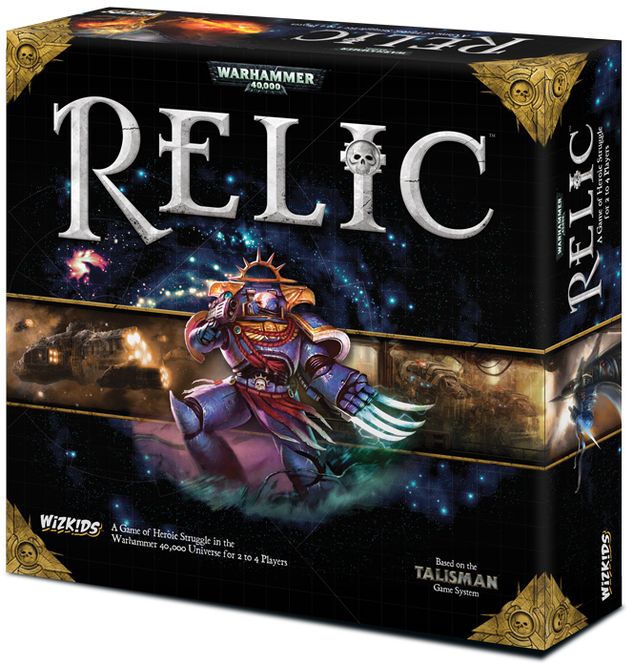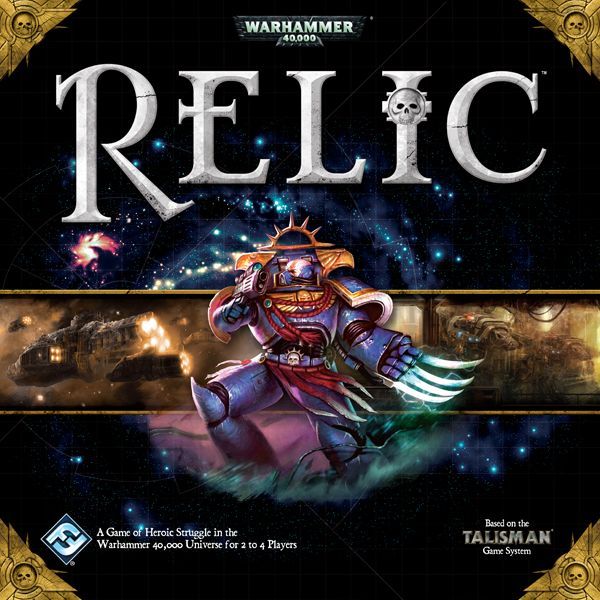Ready to blast off into the Warhammer 40K universe and maybe lose to some unlucky dice rolls? Well, buckle up because this is my review of Relic. I played with friends (and some frenemies), put the game through its paces, and got plenty of table-flipping moments to share. If you want the real scoop on balance, fairness, and if it’s actually fun, you’re in the right spot. Grab your power swords, folks—it’s review time!
How It Plays
Setting up
Shuffle the giant board out flat, dump all those shiny tokens into piles, and give everyone a character sheet and some fancy colored mini. Stack cards, set up the decks, and put those Relic tokens aside. If you’re like me, you’ll lose half the tokens under the table before you start.
Gameplay
On your turn, you roll a die and move that many spaces. Every spot on the board is a mystery—some good, some bad, some like an angry space bear. Draw cards, fight monsters, complete crazy missions, and use weird abilities! Get gear, level up, curse your luck, and watch your friend roll a one for the fifth time. The goal? Earn a Relic, then push to the center of the board while surviving everything the game throws at you.
Winning the game
First player to reach the center space and complete the final scenario wins! It’s not easy—you need a Relic and a lot of luck (and sometimes a friend to not accidentally sabotage you just out of spite). Glory awaits the winner! Losers get to whine about bad dice for hours—it’s practically tradition.
Want to know more? Read our extensive strategy guide for Relic.
Game Balance and Player Fairness in Relic: Is the Emperor Watching?
Let’s talk about balance and fairness in board games, because nothing ruins game night faster than feeling like your friend got handed the win on a silver platter. I’ve lost too many friendships over Monopoly, so I look for games that keep everyone on a fair playing field. Relic makes a big promise here. It takes the crazy, battle-filled world of Warhammer 40,000 and tries to mix it with a sense of balance, like a space marine doing yoga.
In my last game of Relic, all four of us picked different characters. I went with a tough Inquisitor, which felt right because, honestly, nobody expects the Inquisition! Each character has their own powers, strengths and weaknesses. It’s clear the designers wanted everyone to feel useful. And for the first hour? Balance seemed great. Each of us could take different paths—fight monsters, try missions, level up. Nobody felt out of the running.
But, cracks started to show. A friend got a powerful relic super early thanks to a lucky card draw. That one item made him a powerhouse, mowing through enemies like an Ork with a lawnmower. The game lets you catch up if you fall behind, but if someone grabs a lucky relic or two, it can swing the game fast. Some of the event cards can also punish you right after a bad luck streak, which stings more than stepping on a D4 in the dark.
Overall, Relic tries hard to balance player powers and offers ways to catch up, but random elements can tip the scales. For those who hate unfair swings, this might be a sticking point. Next, I’ll weigh in on the age-old battle: luck versus skill in Relic—and trust me, the dice have some strong opinions!

Luck or Skill: Who’s Really Winning in Relic?
When it comes to board games, I have trust issues with dice. Relic is no exception. Sure, the art promises adventure and epic quests, but under that glossy surface lies a whole lot of dice rolling. In my group, Sarah is the Queen of Snake Eyes, and somehow, she still managed to win in Relic. I’m not bitter, I just think fate is playing favorites.
Relic blends luck and skill, but the scales definitely tip toward luck. You make decisions—choosing where to move, what cards to tackle—but your fate is often decided by that pesky die. Once, I tried a mighty quest, planned my route, even bribed Dave with some snacks to keep him distracted, but one bad roll and I was toast. All my epic plans? Gone. That’s Relic for ya!
Skill does help. Experienced players know when to take risks, how to maximize character abilities and avoid the nastier spaces. But even then, you can play smart and still lose. My friend Jessica pulled ahead thanks to lucky draws, while I found myself collecting a pile of defeat tokens. So, are you in control? Sometimes. But mostly, you’re hoping for that miracle roll.
If you love games where the dice decide your destiny, Relic offers a wild ride. If you want every win to be earned through clever planning, you might end up flipping the board (sorry about your cat, Dave). Next up, let’s find out if you’ll want to play Relic again and again, or if it’ll end up as a dust collector on your shelf!

Replayability and Game Length in Relic: Will You Play Again or Regret That Snack Break?
I’ve played Relic more times than I’ve watched reruns of old sitcoms—and trust me, that’s saying something. One thing that keeps pulling me back to the table is the game’s sheer variety. You get lots of characters to pick from, each with their own powers. That means you never really play the same game twice (unless you’re my friend Tom, who always picks the same character, but that’s a Tom problem, not a Relic problem).
The missions switch things up too. One minute you’re running from a warp storm, the next you face off against a space jellyfish or some other cosmic horror. Sure, sometimes that variety means you get stuck with a quest to find three things on opposite sides of the galaxy—cue epic sighing. Still, it adds spice and makes you rethink your plans each time you play.
About game length: strap in, folks. Relic is not a quick game. Every round can take a while, especially if someone at the table has analysis paralysis (looking at you, Linda). Our games ran from two to three hours. If you ask me, that’s perfect for a Saturday night when you have snacks, friends, and a chair that doesn’t squeak. Will you finish every match feeling totally satisfied? Probably, unless you lose in the last ten minutes because of a card draw (but we said we wouldn’t talk about luck again!).
Now, let’s talk about how Relic looks and feels on your table—with a deep dive into cardboard, plastic, and whether you’ll actually get lost in its sci-fi world.
Relic’s Components and Theme: Shiny Bits and Grimdark Vibes
If you love chunky pieces as much as I do, Relic does not disappoint. The board itself looks like the artist got paid by the skull—plenty of skulls, glowing warp storms, and places that yell, ‘do not go here!’ in big neon letters. There’s a real Warhammer 40K vibe happening, and I must admit, moving those detailed plastic busts around made me feel cooler than usual on board game night. They’re solid, have actual weight, and somehow remind me of expensive cake toppers (though, sadly, not edible).
The cards are thick enough that even my snack-loving friend Dave couldn’t grease them up in one sitting. All the tokens and counters have clear art, and there’s a distinct ‘grimdark future’ flavor to everything from event cards to shiny relics. You get the sense that someone at the publisher was told, ‘make it epic, or else.’ They delivered.
Theme-wise, if you’re not into the Warhammer universe, you might miss a few jokes and references. But trust me—Relic does a great job pulling everyone into its over-the-top space opera story. The threat from random events, the desperate gear grabs, and the ever-present chance of doom all fit the setting so well, you start yelling ‘FOR THE EMPEROR!’ whether you wanted to or not.
Final call: if you want a game that looks and feels like an adventure in a doomed galaxy, Relic is a great pick. It might not make you a space marine, but it’ll get you closer than any other game on my shelf.
Conclusion
So, is Relic worth your precious table space? If you like chunky pieces, wild dice rolls, and epic space adventures, Relic will treat you well—just watch out for those moments the dice turn against you and ruin your planet-hopping plans. I had some laughs (and groans) with friends, especially when the luck gods picked their favorites. Not perfect, but if you want Warhammer flavor and can handle some luck-driven chaos, give it a go. That wraps up my review. May your next roll be less cruel than mine!


